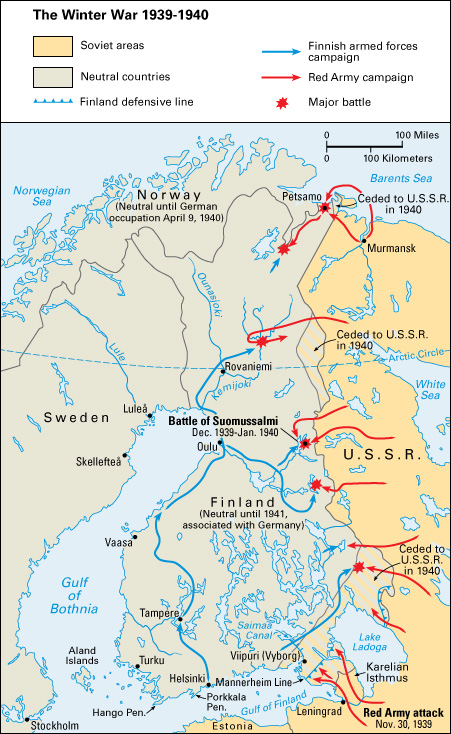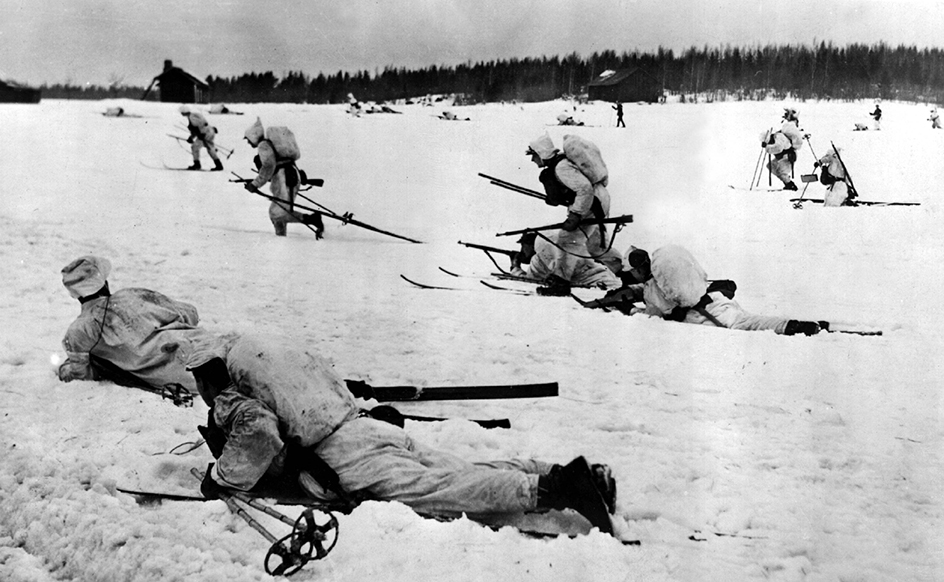Russo-Finnish wars. During World War II (1939-1945), the Soviet Union and Finland fought each other in two wars. They battled in the brief Winter War of 1939-1940. The second war, called the Continuation War, took place from 1941 to 1944. Finland lost both wars.
The Winter War.
Germany conquered Poland in 1939. The Soviet Union feared a German invasion by way of Finnish territory. It maintained that it needed Finland’s Karelian Isthmus, only 25 miles (40 kilometers) from the Soviet city of Leningrad (now St. Petersburg), to protect its borders. The Soviet Union demanded that Finland surrender this territory and allow it to set up defenses along the Finnish coast. The Finns refused. After talks failed, the Soviet Union broke diplomatic ties with Finland.

On Nov. 30, 1939, the Soviet Union attacked Finland without formally declaring war. At first, the Finns were able to use their country’s rugged, forested terrain to their advantage. In a series of brilliant maneuvers, they stopped the first Soviet attacks. Several nations, including France and the United Kingdom, tried to send military supplies to the Finns. But most supplies arrived too late to use in battle. By February 1940, the larger, better equipped Soviet invaders overwhelmed the exhausted defenders.
A peace treaty signed in Moscow on March 13, 1940, imposed extremely harsh terms on Finland. The Soviets took more than they had first demanded. Finland lost a tenth of its area, including most of Karelia, the industrialized areas of Lake Ladoga, strategic islands in the Gulf of Finland, and the Petsamo region on Finland’s Arctic coast near the Soviet port of Murmansk. The Soviets also received a 30-year lease on the Hango Peninsula.
The Continuation War.
In 1940 and 1941, Finland entered into agreements that allowed Nazi Germany to move troops across Finland, and to base troops on Finnish soil. In return, Germany provided the Finnish army with military equipment. The Finns rejected Nazism, but they cooperated with Germany because it was the only nation able to give them large-scale military aid. On June 22, 1941, Germany invaded the Soviet Union. Finland joined this invasion hoping to regain the territory it had lost in 1940. By late 1941, Finnish troops reoccupied southern Karelia and advanced into Soviet Karelia, where they established defensive positions.

The war, however, later turned against the Germans and the Finns. In September 1944, Finland accepted severe Soviet peace terms. The treaty restored the 1940 Finnish-Soviet border. The Finns lost the Arctic port of Petsamo and nearby nickel mines. They regained the Hango Peninsula but had to grant the Soviets a 50-year lease on the Porkkala Peninsula, near Helsinki. Finland agreed to disarm the German troops in Finland and to pay the Soviets a large sum of money for war damages. The Soviet Union returned the Porkkala Peninsula to Finland early in 1956. In 1962, the Soviets agreed to lease to Finland part of the Saimaa Canal, which was lost to the Soviet Union in 1940.
